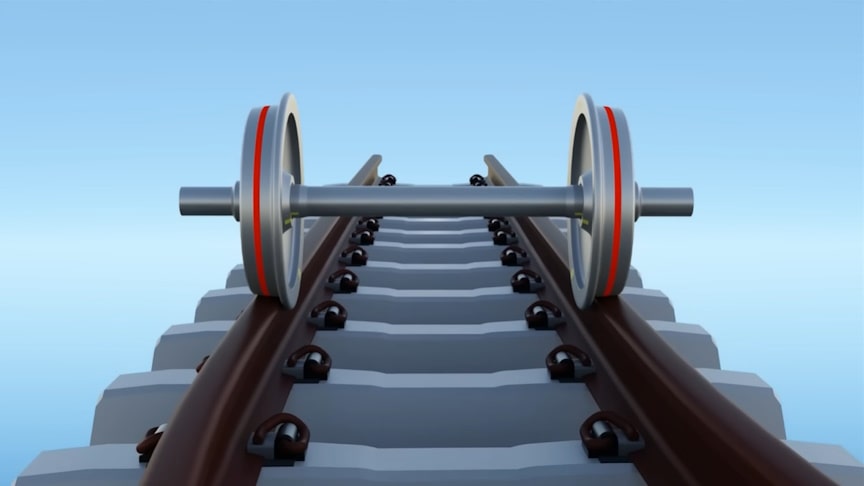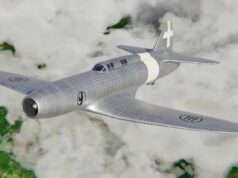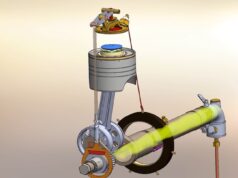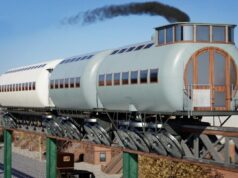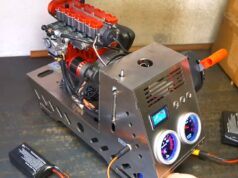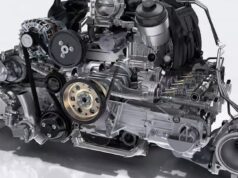A train wheel or rail wheel is a type of wheel specially designed for use on railway tracks. The wheel acts as a rolling component, typically press fitted onto an axle and mounted directly on a railway carriage or locomotive, or indirectly on a bogieYou all know that train engine has no steering. Hence, there is no need for driver to drive either left or right side depending upon the direction of the curve. Trains move straight.
source.image(PrtSc): Animechanics
When trains negotiate a curve, the specially designed wheels automatically take care of the movement. The wheels are actually made as a truncated cone. In rail technology we call it as “ coning of wheels”. In case of curves the outer wheel has to travel more distance than inner wheel. This is a pure geometry.Watch the video from Animechanics for more info:
The running surface of most is conical, serving as the primary means of keeping the train’s motion aligned with the track (the wheels are fixed on their axles, and as the mass of the train pushes it towards the outside of the curve, the outside wheel rides up to contact the rail at a larger diameter while the inside wheel drops down to contact its rail at a smaller diameter, travelling a smaller distance for each rotation of the axle, and steering the train round the curve.
Advertisement
In curves the axle having two wheels is pushed radially outward by centrifugal force.The coning of wheel ensures that the wheel cone portion with “more radius” travels along outer rail and lesser radius along the inner rail. This way the difference in distance traveled is taken care off.Like Highways, in railway track also the outer rail is kept higher than inner rail to counteract the centrifugal forces and also to ensure equal distribution of whee loads on both rails.

